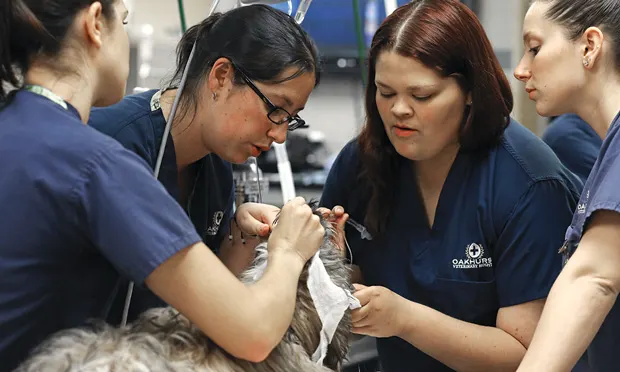Tips for Team Communication

When you walk into the treatment area, you overhear a veterinary technician complaining that another veterinary technician is out sick again. You hear, She is always sick, leaving me to pick up the slack. I feel as if I am the only person working here! The day progresses and more team members grumble and complain.
Unaddressed, these seemingly harmless grievances could grow into conflicts and create problems that influence the work environment. Timely team communication addresses problems and prevents issues from snowballing.
Five to 7 days a week are spent at work. That adds up to a lot of time spent around supervisors and team members who were not chosen as “work family.” Developing strong communication skills contributes to team effectiveness and personal quality of life. Teamwork leads to a positive team environment, enhancing client and job satisfaction, increasing team member motivation and role clarification, and improving service provision.<sup1,2 sup>
Related Article: Crisis in Your Practice? How to Handle Public Relations
On the other hand, the consequences of a negative team environment include dissatisfaction, stress, poor coping skills, frustration, burnout, and suicide.2 To avoid detrimental effects, it is essential to enhance work engagement and close the gap between job demands (eg, workload, interpersonal conflict) and key resources (eg, coping skills, support systems, partnership in decision-making).<sup3 sup>
Relational coordination (RC) is one way to bridge this gap. RC is a mutually reinforcing process of interaction between communication and relationships carried out for the purpose of task integration (ie, building a strong team through timely and regular communication so the work gets done).4
The 3 relationship ties are shared goals, shared knowledge, and mutual respect:
Shared goals go beyond team members’ individual functional goals to increase buy-in and change the focus to include the entire team.
Shared knowledge enables team members to understand how their specific tasks interrelate with the practice as a whole.
Mutual respect fosters team members’ ability to support one another, step in when needed, and take account of others’ duties.
These relational dimensions are achieved and reinforced through frequent, timely, and accurate communication and problem-solving approaches.5 They involve the basic principles: who needs to know what, when, why, and how quickly, and how to partner toward a solution.
Related Article: The Unmotivated Team Member: What Is Lacking?
The veterinary team’s overarching shared goal is to provide every patient and client the best care. When team members work toward this common mission, they begin to understand the key role they each play and how their roles are interdependent.
Knowing each team member’s role builds respect among the team, promotes camaraderie, and fosters constructive communication when issues arise.
For example, the front-office team serves as the practice’s first impression, providing a warm welcome and establishing rapport with clients. The veterinary technicians gather vital information, continue building trust, take the patient’s history that they share with the veterinarian, and assist in the patient’s diagnostic and medical treatment. Veterinarians consider the history as they diagnose and treat the patient and care for the client.
Knowing each team member’s role builds respect among the team, promotes camaraderie, and fosters constructive communication when issues arise. Weekly team meetings ensure that all members are on the same page and create opportunities to address challenges. Team members begin to see one another as allies and are more likely to cover for one another, problem solve, and avoid blaming others. The veterinary technician’s response to the other’s absence in the earlier example will likely be supportive rather than resentful.
RC paves the way for effective and productive teamwork. Team members realize their interdependence and how their individual tasks relate to one another’s work. Mutual respect enhances each team member’s receptivity to communication, which in turn becomes about the work process and outcomes vs the problems and people.
The bottom line? The work gets done and team satisfaction prevails.
Editor’s note: Lisa Hunter, an alumnus of Colorado State University, is an advocate of the human–animal bond and veterinary–client communication, and interim clinical counselor for The Argus Institute at Colorado State University.
Jane R. Shaw, DVM, PhD, is associate professor of Veterinary Communication for Professional Excellence at Colorado State University College of Veterinary Medicine and Biomedical Sciences. She is a recognized expert in veterinarian–client–patient interactions, implements the communication curriculum at CSU, and conducts skills-based communication workshops nationally and internationally.